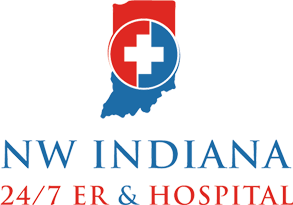As the new school year approaches, fall sports will soon start. As you establish your child’s back-to-school routine, it’s important to familiarize yourself and your student-athlete with sports safety practices. Being informed about sports safety can significantly reduce the risk of serious injuries.
With the busy activities of back-to-school preparations, such as shopping for school supplies and enrolling in the right courses, parents often overlook sports injury prevention. Each year, about 30 million children participate in organized sports, which provides a lot of benefits for children, such as a chance to exercise and build teamwork and leadership skills. However, with physical activity comes the risk of injuries. Research shows that 3.5 million children ages 14 and under get hurt annually playing sports. Additionally, two million high school athletes suffer from severe injuries each year, with over 30,000 hospitalizations. Surprisingly, despite these high numbers, the National Athletic Trainer Association reports that only 37% of U.S. public high schools have a full-time athletic trainer to medically assist student-athletes.
It’s crucial to prioritize sports safety and educate children about injury prevention to avoid serious injuries among young athletes.
5 Back to School Sports Safety Tips
1. Keep Hydrated
It is important to encourage your child to drink plenty of water throughout the day to stay hydrated and avoid heat-related illnesses. Athletes are recommended to drink water 30 minutes before an activity and every 15-20 minutes throughout the entire day.
2. Watch for Injury Burnout
Children’s bones are still growing and more vulnerable under stress, leaving them at potential risk for overuse injuries. It is important to encourage your child to listen to their body, take adequate rest and recovery time, and avoid overtraining or overscheduling that goes beyond their limits.
3. Wear Proper Equipment
There is specific protective equipment for each sport. Ensuring that the equipment fits correctly and provides adequate support is important for preventing injury.
4. Talk to your Child
Sometimes, athletic trainers may not be available to assist young athletes in need of medical attention. It is important for parents to educate their children about practicing sports safety, like the significance of stretching to loosen muscles and reduce the risk of serious injuries before engaging in physical activity.
5. Schedule a Back to School Sports Physicals
All student-athletes are encouraged to visit a doctor for a physical exam before the sports season begins. Your child can be evaluated for any preexisting health conditions that may contribute to the risk of injury.
Sudden Cardiac Arrest
A major health concern for many athletes in the United States is cardiac arrest. Some experts suggest that one high school student dies every three days due to cardiac arrest, and 75% of exercise-related deaths in athletes are attributed to cardiac arrest.
Sudden cardiac arrest typically occurs without warning. The heart beats irregularly, causing it to malfunction and stop beating unexpectedly. A comprehensive school sports physical can be crucial in preventing this life-threatening occurrence. Despite the limited preventive measures available, regular wellness exams and echocardiograms can detect any abnormalities that may signal a risk of cardiac arrest.
In case your student athlete experiences a sudden injury or illness, NW Indiana ER & Hospital is available 24/7 to help them recover quickly. We understand how scary an emergency can be for both the child and the parent. Our expert physicians specialize in pediatric care and offer compassionate and comfortable treatment for your child. Your neighborhood ER & Hospital is open 24 hours a day, 365 days a year, including before, during, and after school hours.
Disclaimer: As a service to our readers, NW Indiana ER & Hospital and Nutex Health state no content on this site, regardless of date, should ever be used as a substitute for direct medical advice from your doctor or other qualified clinician.



0 Comments